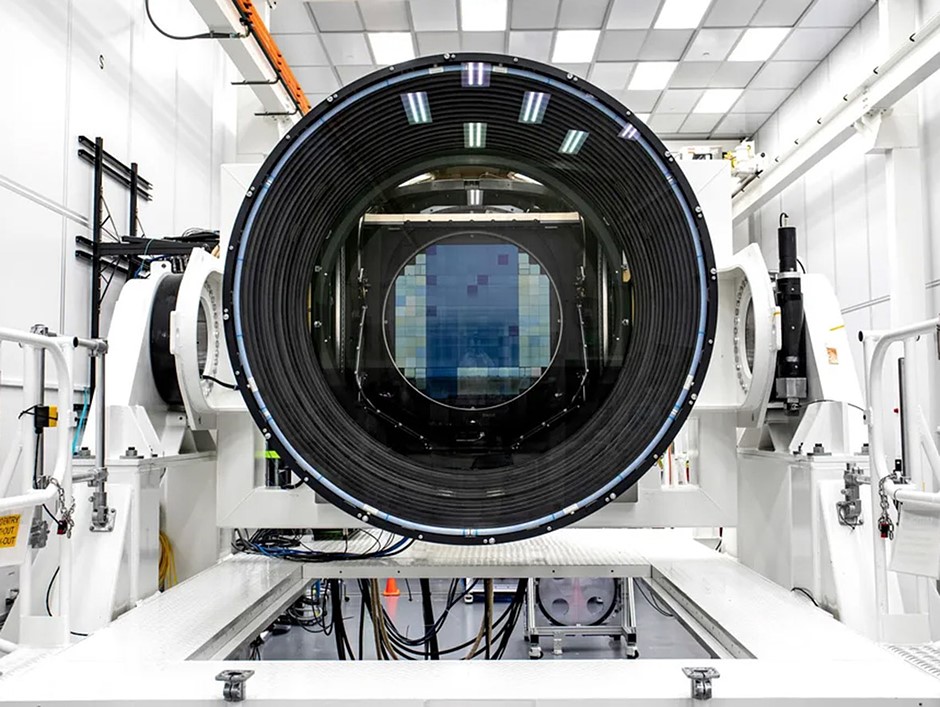
[ad_1]
 |
At the SLAC National Accelerator Laboratory in Menlo Park, California, the world’s largest camera is under construction. It’s nearly complete! For the last seven years, engineers have worked hard on the camera, and per engineer Hannah Pollek, the camera’s mechanisms are now fully assembled. If everything goes according to plan, the camera will be shipped to its final destination at the Vera C. Rubin Observatory in the highlands of Chile.
The camera will form the heart of the Legacy Survey of Space and Time (LSST) telescope, where the telescope will work to unravel mysteries of the universe, such as the nature of dark energy and dark matter. The camera’s sensor is an array comprising 189 separate charge-coupled devices (CCD) that each capture a 16MP image. The sensors were placed into specially-built, highly-precise science rafts of 21 sensors each by the Department of Energy’s Brookhaven National Laboratory and then shipped to SLAC. The engineers at SLAC put the 21 rafts into a grid to hold them in place. Each raft costs about $3M, so the stakes were high during fabrication and construction.
Paired with the immense sensor is the world’s largest lens. It’s 1.57m (5′) across. Once that’s installed, light travels through a triplet of mirrors to the sensor array. Completing the sensor array and aligning the focal plane was about a six-month job in and of itself. The gaps between each raft are about the width of five human hairs. However, if the sensors touched each other during construction, they could’ve broken, so there’s very little room for error.
The camera will capture a segment of the sky 3.5 degrees across, which as IEEE Spectrum points out is about seven times the width of the full moon. The camera will record a pair of back-to-back exposures for about 15 seconds each. The exposures are so long in part because the shutter has a lot of sensors to cover. The telescope will survey the southern sky for years, and its 3.2 gigapixel photos will peer deep into the cosmos.
 |
It’s no surprise that a big part of the engineering challenge is keeping the CCD sensors cold. There are many tubes behind the sensor, pumping refrigerant through the system. The sensors must be cooled to around -100 degrees Celsius (-148 degrees Fahrenheit) for optimal operation and to keep visible noise to a minimum. The back-end electronics get hot, too and require specialized cooling solutions. This part of the overall camera is still causing issues and is undergoing additional testing and tinkering.
A few components are left to finish the fabrication and setup of the massive camera. The camera requires specialized filters to allow certain wavelengths of light to pass through. These filters have been built in Massachusetts and France and are awaiting installation. It takes about two minutes for the camera’s special filter carousel to swap out filters.
Operations manuals, which are being written in English in California, will need to be translated into Spanish for local Chilean technicians at the observatory. Some parts of the lens and other glass elements will also need ot be removed for transportation to South America. The camera will be placed inside a large shipping container and clamped to frames to ensure extreme stability during transit. The camera will be transported in a privately charged Boeing 747 from San Francisco direct to Santiago, Chile. ‘We really want to avoid extra trucking in the .US.,’ says Margaux Lopez, a staff engineer at SLAC. ‘It just makes more sense to put our camera on a chartered plane with all of the rest of the stuff in the clean room. We have an incredible amount of support equipment that also needs to go down.’
If construction finishes on time and the transit goes smoothly, the 3200MP camera should capture night sky photos by 2024.
Images courtesy of Jacqueline Ramseyer Orrell / SLAC National Accelerator Laboratory
[ad_2]
Source link







